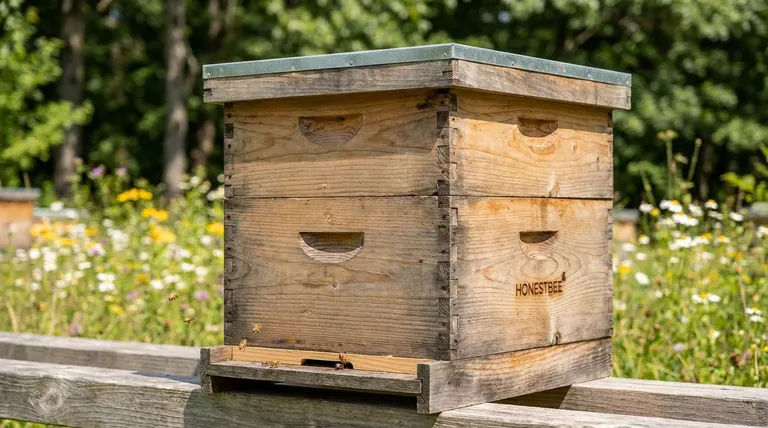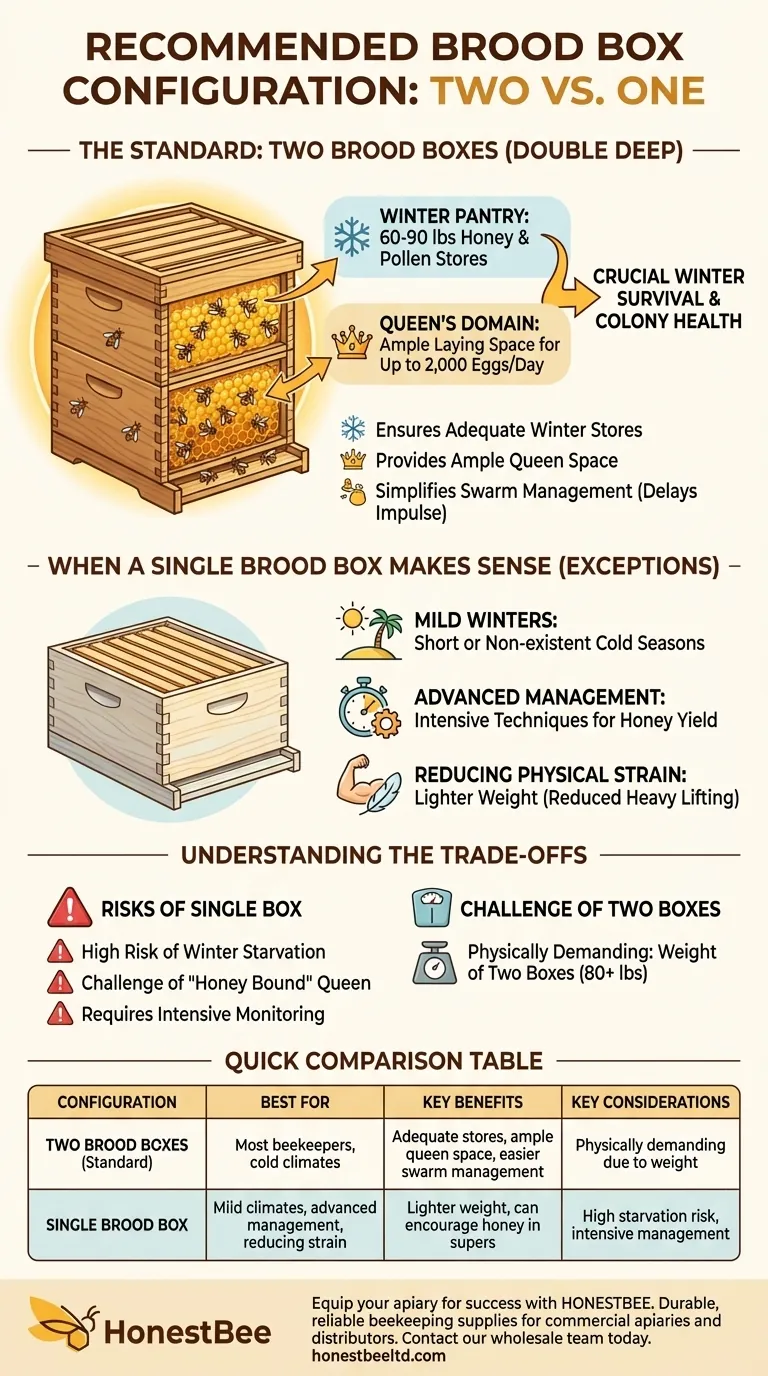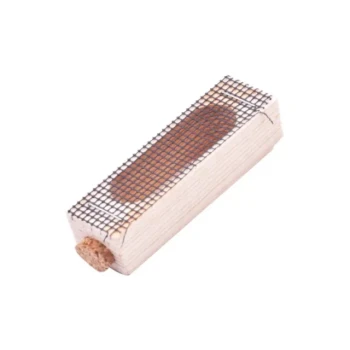For the vast majority of beekeepers, particularly those in climates with a distinct winter, a two-box brood chamber is the standard and recommended configuration. This setup provides the necessary resources and space for a colony to build up in the spring and successfully overwinter.
The decision between one or two brood boxes is a fundamental choice that directly impacts winter survival, swarm prevention, and the overall health of your colony. While a single box has its uses, the two-box system provides a crucial safety margin that benefits most beekeepers.

Why Two Brood Boxes is the Standard
The two-box, or "double deep," hive configuration has become the default for sound, practical reasons that center on the natural life cycle of a honey bee colony. It is designed to give the bees what they need to thrive with minimal emergency intervention.
Ensuring Adequate Winter Stores
In regions with cold winters, a colony requires a substantial amount of stored honey to generate heat and survive until the first spring nectar flow. A second brood box provides the necessary space for the bees to store these critical food reserves.
A single box simply does not have the volume to hold both a healthy population of winter bees and the 60-90 pounds of honey they need. The second box acts as the colony's winter pantry.
Providing Ample Space for the Queen
A healthy queen bee is an egg-laying machine, capable of laying up to 2,000 eggs per day during peak season. A single brood box can be filled with brood (eggs, larvae, and pupae) very quickly.
The second box gives a prolific queen uninterrupted room to lay. This prevents the colony from becoming "honey bound," a condition where incoming nectar backfills cells in the brood nest, restricting the queen and slowing population growth.
Simplifying Swarm Management
A primary trigger for a colony to swarm is a sense of being overcrowded. A two-box system provides significantly more space for the population to expand.
This buys the beekeeper valuable time. The colony feels less congested, delaying the swarm impulse and giving you a wider window to perform inspections and take preventative measures.
When a Single Brood Box Makes Sense
While two boxes are the standard, there are specific scenarios where a single brood box strategy is intentionally employed. These are typically exceptions to the general rule.
Regions with Mild Winters
In climates where the winter is short, mild, or non-existent, the colony does not need a massive store of honey to survive. In these locations, a single brood box may provide sufficient space year-round.
Advanced Management Techniques
Some experienced beekeepers run single-brood-box hives to encourage the bees to store honey in the supers above more quickly. This is an intensive management style that requires constant monitoring to prevent swarming and ensure the queen has laying space.
Reducing Physical Strain
A deep hive body full of honey, pollen, and bees can weigh 80 pounds or more. For beekeepers with physical limitations, managing single-box hives significantly reduces the amount of heavy lifting required during inspections.
Understanding the Trade-offs
Choosing your hive configuration is an exercise in balancing risks and benefits. Understanding the trade-offs is crucial for making an informed decision.
The Risk of Starvation
The primary drawback of a single-brood-box hive in a cold climate is the high risk of winter starvation. Without that second box for food stores, the colony can easily burn through its resources before spring arrives.
The Challenge of a "Honey Bound" Queen
With a single box, the beekeeper must be extremely vigilant during the main nectar flow. You must ensure the queen doesn't run out of laying space, which can cripple the colony's future population.
The Weight of Two Boxes
The most significant downside of the two-box system is the weight. Hive inspections that require you to lift the top box are physically demanding and are a major consideration for many beekeepers.
Making the Right Choice for Your Apiary
Your decision should be based on your climate, your physical abilities, and your ultimate goals as a beekeeper.
- If your primary focus is colony survival and straightforward management: The two-box brood chamber is the most resilient, forgiving, and reliable setup.
- If you live in a warm climate with very mild winters: A single brood box may be a perfectly viable and lighter-weight strategy for your apiary.
- If your primary focus is maximizing honey yield with advanced techniques: A single-box system can work, but it demands more frequent and intensive management to be successful.
Ultimately, aligning your hive configuration with your local climate and beekeeping goals is the most direct path to a healthy and productive colony.
Summary Table:
| Configuration | Best For | Key Benefits | Key Considerations |
|---|---|---|---|
| Two Brood Boxes (Standard) | Most beekeepers, especially in cold climates | Ensures adequate winter stores, ample queen space, simplifies swarm management | Physically demanding due to weight |
| Single Brood Box | Mild climates, advanced management, reducing physical strain | Lighter weight, can encourage honey production in supers | High risk of winter starvation, requires intensive management |
Equip your apiary for success with HONESTBEE.
Whether you're managing a single hive or a large commercial operation, the right equipment is fundamental to colony health and productivity. At HONESTBEE, we supply durable, reliable beekeeping supplies and equipment through wholesale-focused operations, specifically designed for the needs of commercial apiaries and beekeeping equipment distributors.
Let us help you build a stronger, more resilient beekeeping business. Contact our wholesale team today to discuss your equipment needs and volume pricing.
Visual Guide

Related Products
- HONESTBEE Entrance Bee Feeder Professional Hive Nutrition Solution for Beekeeping
- Boardman Entrance Bee Feeder Durable Galvanized Steel and Wood Construction for Beekeeping
- Professional Hive Front Entrance Bee Feeder
- Professional Engraved Round Hive Number Tags for Beekeeping
- HONESTBEE Professional Entrance Bee Feeder Hive Nutrition Solution
People Also Ask
- What are the different types of honey bee feeders? Choose the Right Feeder for Your Hive
- How does the entrance feeder method work? A Guide to Simple But Risky Hive Feeding
- How is the mesh ladder and barrier installed in the feeder box? A Step-by-Step Guide to Prevent Bee Drowning
- What is a common problem with hive front feeders? Avoid Robbing Frenzies and Protect Your Hives
- How to make an entrance feeder for bees? A DIY Guide for Safe & Effective Feeding



















